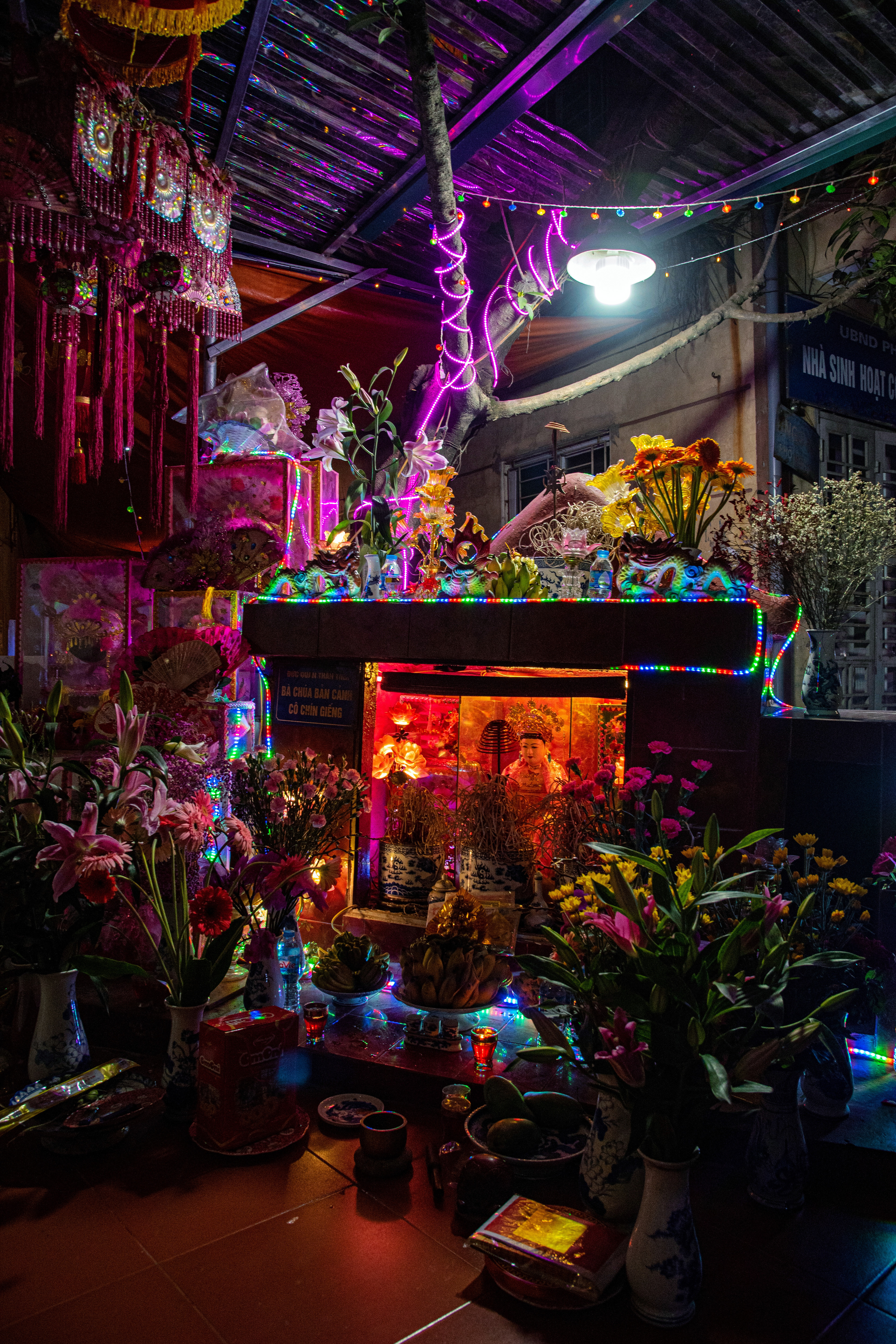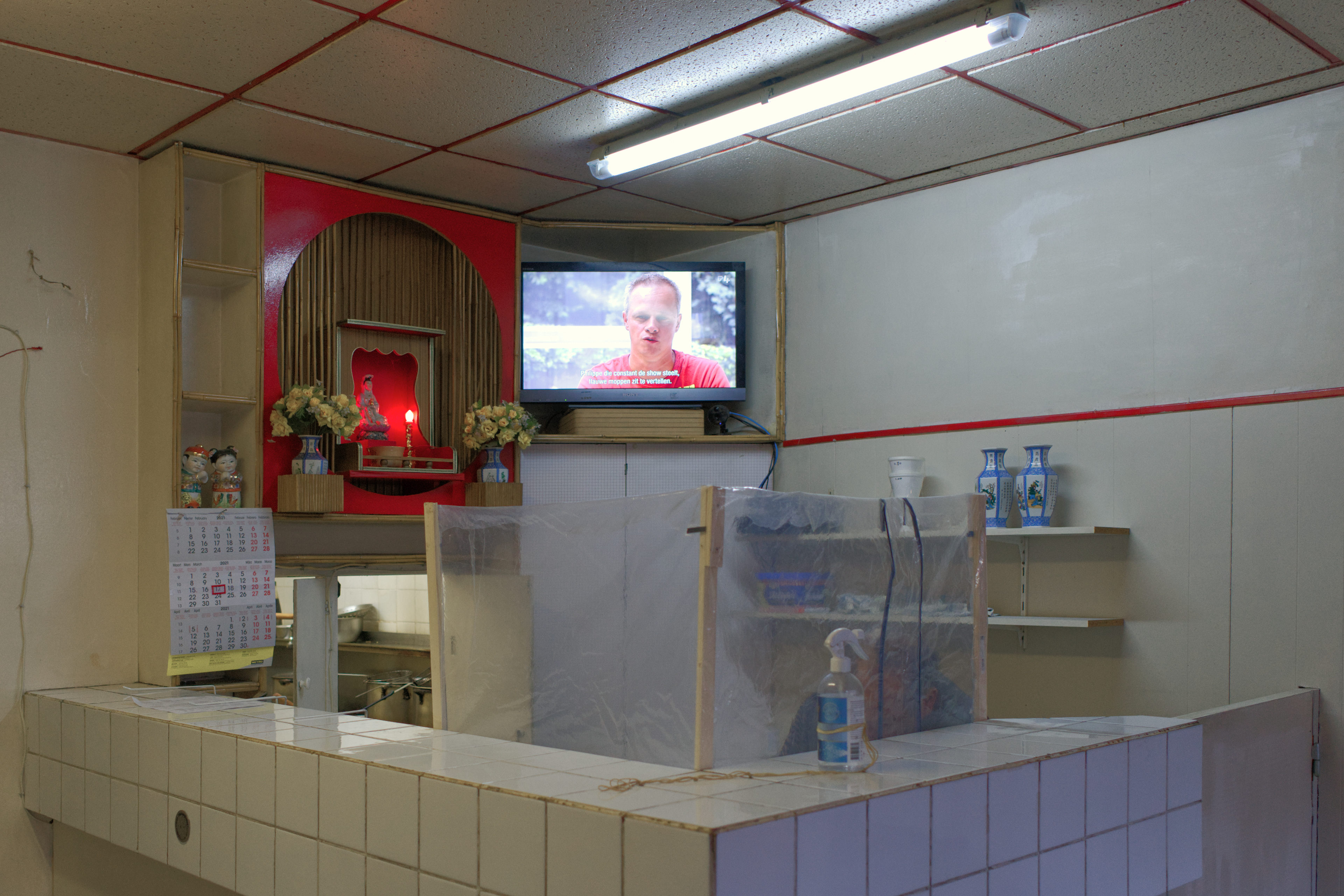
Kien Hoang

Moritz Broszat
Kien:
"To me, religion plays a very important role in shaping the cultural identity of a society. In Vietnam, most religions are imported from abroad, only Đạo Mẫu - one of the main axes of folk culture, has existed throughout thousands of years of history as a counterbalance to the outside religion. Đạo Mẫu worships goddesses, women associated with the history of our country. Since ancient times, when the oppression of the class was increasingly fierce, a part of the working population fell into a stalemate. That is the reason why they come to and rely on the protection of invisible forces. The goddesses will bring them safety and luck in life. Gradually Đạo Mẫu became a part of the Vietnamese people’s lives, paying homage to Vietnam’s historic matriarchal society. These religious practices help bring balance to a world now dominated by technology, and help create generational connection amongst the people in VietNam."
"To me, religion plays a very important role in shaping the cultural identity of a society. In Vietnam, most religions are imported from abroad, only Đạo Mẫu - one of the main axes of folk culture, has existed throughout thousands of years of history as a counterbalance to the outside religion. Đạo Mẫu worships goddesses, women associated with the history of our country. Since ancient times, when the oppression of the class was increasingly fierce, a part of the working population fell into a stalemate. That is the reason why they come to and rely on the protection of invisible forces. The goddesses will bring them safety and luck in life. Gradually Đạo Mẫu became a part of the Vietnamese people’s lives, paying homage to Vietnam’s historic matriarchal society. These religious practices help bring balance to a world now dominated by technology, and help create generational connection amongst the people in VietNam."
Moritz:
"In terms of consumption and quality awareness, food is currently becoming more relevant for me. Nevertheless, I still have a primarily functional eating habit. That means my meals are mostly time-saving and easy. In this way, do I consider the peculiarity that has become less dubious, but inevitable? In the past, family meals were considered very special, you got together and experienced a kind of quality time. In the cultural context, I was interested in culinary appropriation. My eating routine consists of elements from a wide variety of international cuisines. This week I visited a few Arab, African, and Asian retail stores and got a few of their specialties. So in the end I had falafel with rice and vegetables, which is one of the dishes I will have again.
In addition to cultural appropriation, I pursued another aspect of internationality this week. Since cultural identity is very extensive, I looked for the representative. Again in the culinary area, but with attention to the decorative elements that represent the cultural asset. Individual objects that indicate belonging to a culture. So within this room installation you can see how someone has represented habitat and communicates it to the outside world. I was intrigued by how many traces of identity there are in such a small space. One attaches cultural meaning to objects in order to convey a sense of belonging and to compress its identitarian characteristics. I think the habitat always provides information about identity and values.
The subtitle on TV: 'Philippe die constant de show steelt, flauwe moppen zit te vertellen (Philippe who is constantly stealing the show, telling silly jokes)'"
"In terms of consumption and quality awareness, food is currently becoming more relevant for me. Nevertheless, I still have a primarily functional eating habit. That means my meals are mostly time-saving and easy. In this way, do I consider the peculiarity that has become less dubious, but inevitable? In the past, family meals were considered very special, you got together and experienced a kind of quality time. In the cultural context, I was interested in culinary appropriation. My eating routine consists of elements from a wide variety of international cuisines. This week I visited a few Arab, African, and Asian retail stores and got a few of their specialties. So in the end I had falafel with rice and vegetables, which is one of the dishes I will have again.
In addition to cultural appropriation, I pursued another aspect of internationality this week. Since cultural identity is very extensive, I looked for the representative. Again in the culinary area, but with attention to the decorative elements that represent the cultural asset. Individual objects that indicate belonging to a culture. So within this room installation you can see how someone has represented habitat and communicates it to the outside world. I was intrigued by how many traces of identity there are in such a small space. One attaches cultural meaning to objects in order to convey a sense of belonging and to compress its identitarian characteristics. I think the habitat always provides information about identity and values.
The subtitle on TV: 'Philippe die constant de show steelt, flauwe moppen zit te vertellen (Philippe who is constantly stealing the show, telling silly jokes)'"
Kien Hoang preparing food
Moritz Broszat preparing food